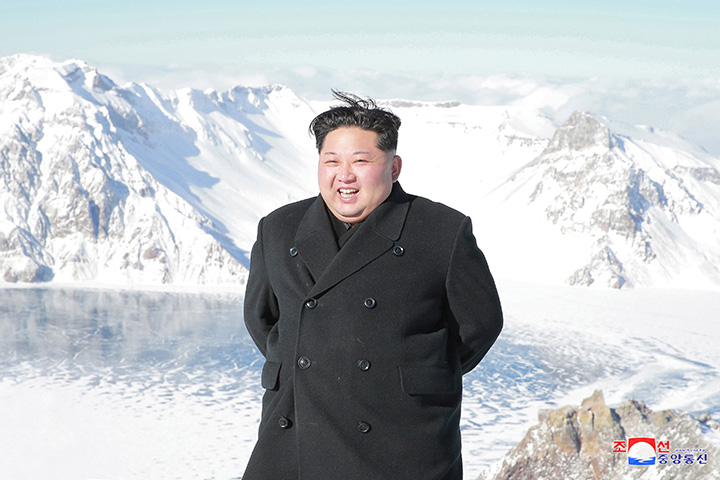WASHINGTON – Two minor tremors were detected on Saturday from near North Korea‘s nuclear test site and were probably aftershocks from the country’s massive nuclear test in early September, a U.S. Geological Survey official said.

The aftershocks, of magnitude 2.9 and 2.4, were detected at 1:13 a.m. and 1:40 a.m. EST respectively, said the USGS and Lassina Zerbo, executive secretary of the Vienna-based Comprehensive Nuclear-Test-Ban Treaty Organization.
A tweet from Zerbo said analysts had confirmed that the activity was “tectonic” in origin.
READ MORE: North Korea earthquake a sign of instability at nuclear test site, say experts
The USGS official said the tremors had been in the vicinity of the Punggye-ri nuclear test site, where North Korea conducted its sixth and largest underground nuclear test on Sept. 3.
“They’re probably relaxation events from the sixth nuclear test,” the official said. “When you have a large nuclear test, it moves the earth’s crust around the area, and it takes a while for it to fully subside. We’ve had a few of them since the sixth nuclear test.”
Pyongyang said the September test was of an H-bomb, and experts have estimated it was 10 times more powerful than the U.S. atomic bomb dropped on Hiroshima in 1945.
A series of quakes since then has prompted experts and observers to suspect the test might have damaged the mountainous location of its site in the northwest tip of North Korea, where all of the country’s nuclear tests have been conducted.
South Korea’s spy agency told South Korean lawmakers in October that North Korea might be readying two more tunnels at the site.
READ MORE: North Korea says nuclear war is inevitable as U.S., South Korean military exercise continues
North Korea hinted its next nuclear test could be above ground after U.S. President Donald Trump warned in September that the United States would “totally destroy” North Korea if it threatened America.
Another possible obstacle to North Korea’s use of Punggye-ri for tests is the nearby active volcano of Mount Paektu, which North Koreans consider a sacred site. Its last eruption was in 1903, and experts have debated whether nuclear testing could trigger another.
North Korea’s official media reported on Saturday that national leader Kim Jong Un had scaled Mount Paektu with senior military officials to “emphasize his military vision” after completion of the country’s nuclear force.
Kim declared the nuclear force complete after the test of North Korea’s largest ever intercontinental ballistic missile last month, which experts said puts all of America within range.










Comments